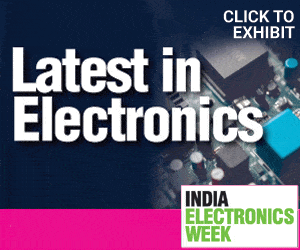Researchers combined light-emitting electrochemical cells with a resistive random-access memory that are both based on perovskite for faster memory.
Fundamentally, the data gets stored in the form of ones and zeros known as bits. Therefore, for better data storage solutions, it comes down to finding more efficient ways to store and read these ones and zeros.
Flash memory is an extremely popular storage solution. Researchers have been searching for alternatives that could further improve speed and simplify fabrication. For that, one of the candidates is nonvolatile resistive random-access memory, or RRAM. The resistive memories use materials that can switch between states of high and low resistance to represent ones and zeros. However, the electrical measurements needed to read zeros and ones from RRAM limit the overall speed.
“Recently, to overcome this issue, RRAMs have been combined with LEDs to develop something called light-emitting memories. In this case, the data can also be read by checking if the LED is on or off. This additional optical reading also opens new routes for carrying large amounts of information.” explains Chun-Chieh Chang, professor at National Taiwan Normal University and one of the corresponding authors of the study published in Nature Communications.
Researchers from National Taiwan Normal University and Kyushu University have developed a device that needs only a single perovskite semiconductor to simultaneously store and visually transmit data. By integrating light-emitting electrochemical cells with a resistive random-access memory that are both based on perovskite, the team achieved parallel and synchronous reading of data both electrically and optically in a ‘light-emitting memory.’
“Using just one perovskite layer between contacts, we could fabricate a device that works both as a RRAM and a light-emitting electrochemical cell,” explains National Taiwan Normal University’s Ya-Ju Lee, who also led the study. “By taking advantage of the fast, electrically switchable ionic motion that enables this dual functionality in a single layer of perovskite, we were able to connect two devices together and develop an all-inorganic perovskite light-emitting memory.”
The researchers demonstrated using perovskite consisting of cesium lead bromide, that data can be electrically written, erased, and read in one of the perovskite devices acting as an RRAM. The second device optically transmits data through light emission by working as a light-emitting electrochemical cell with a high transmission speed.
“This demonstration significantly broadens the scope of applications of the developed all-perovskite light-emitting memory and can serve as a new paradigm of synergistic combination between electronic and photonic degrees of freedom in perovskite materials,” says Tamada.
“From multicast mesh network to data encryption systems, these findings have the potential for numerous applications in next-generation technologies.”






